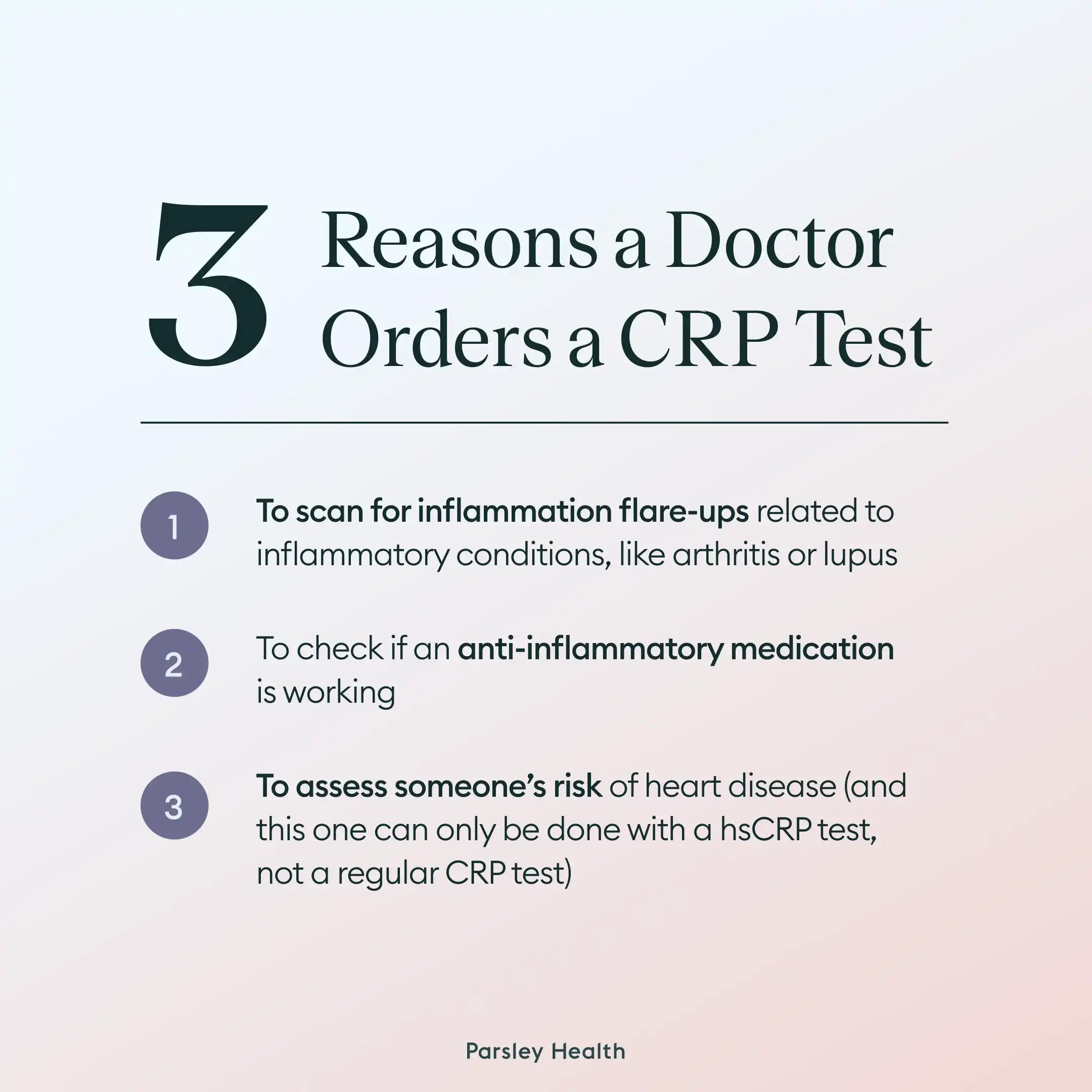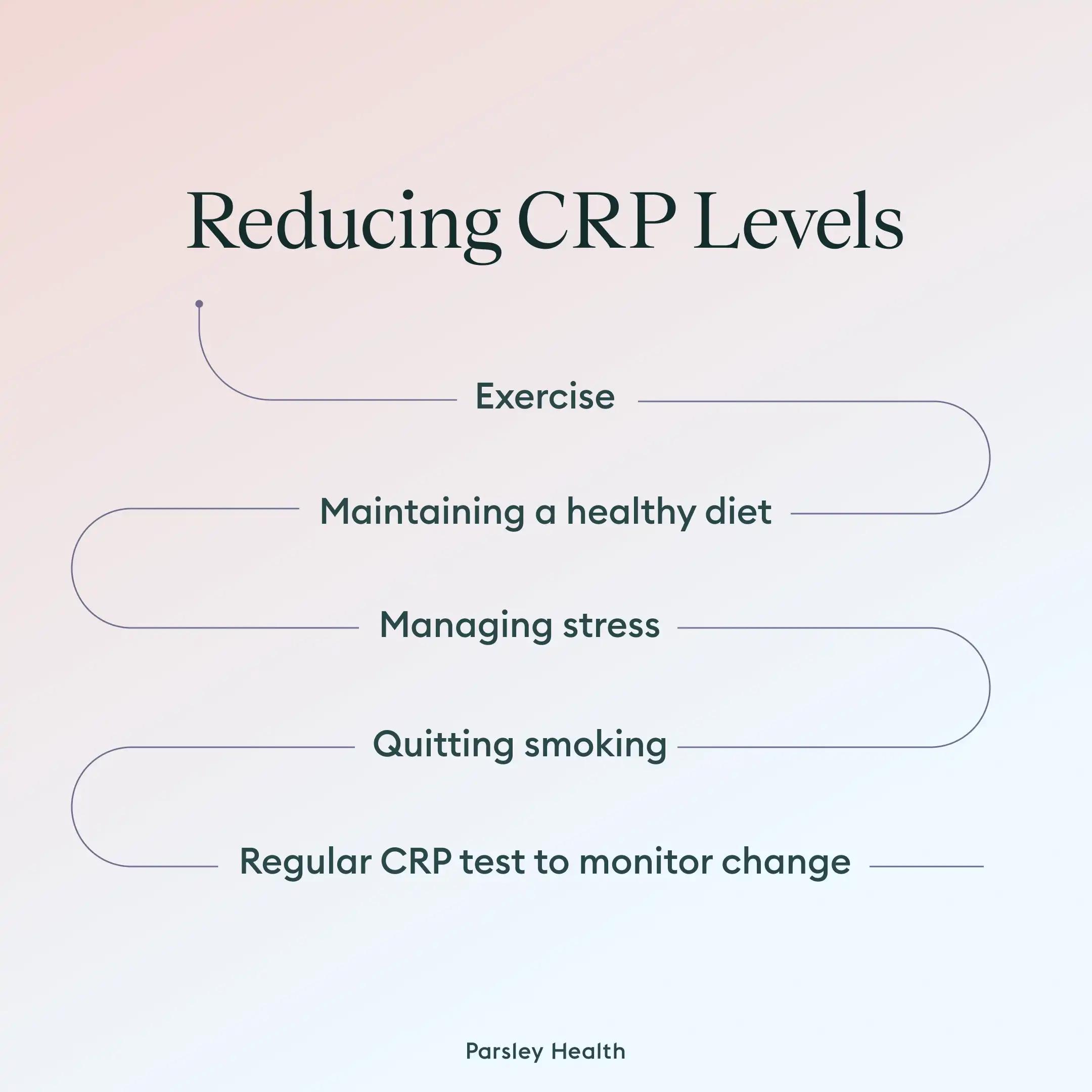When creating health goals, our desired outcomes are often to lose weight or feel more energized. Yet there may be another objective you want to focus on: reducing or preventing inflammation. Three out of every five people worldwide die of inflammatory diseases, making inflammation levels an important marker of health. To measure inflammation in the body, doctors turn to C-reactive protein (CRP) level tests. But how much CRP level is dangerous? And what does this test even look like?
Ahead, we’ll answer these two questions and provide some expert-endorsed ways to reduce CRP levels.
Understanding CRP
“C-reactive Protein is a biomarker that plays a critical role in assessing systemic inflammation,” says Darshan Shah, MD, the founder of Next Health. When the body experiences inflammation, it produces CRP in the liver and then releases it into the bloodstream. There’s always a small amount of CRP in the bloodstream, and we want that since normal CRP levels boost our immune system and help our bodies repair tissue.
Problems occur, however, when CRP levels rise above normal. Often, elevated CRP levels indicate that there’s an infection or inflammation present. High levels have been linked to many chronic conditions, such as obesity, diabetes, arthritis, allergies, chronic obstructive pulmonary disease (COPD), and multiple cardiovascular diseases.
These high levels are not just signs of different conditions or infections, they can also impact recovery and treatment in some cases. In one study with older patients who underwent surgery for cervical hip fractures, lower CRP levels were associated with a smoother recovery.









